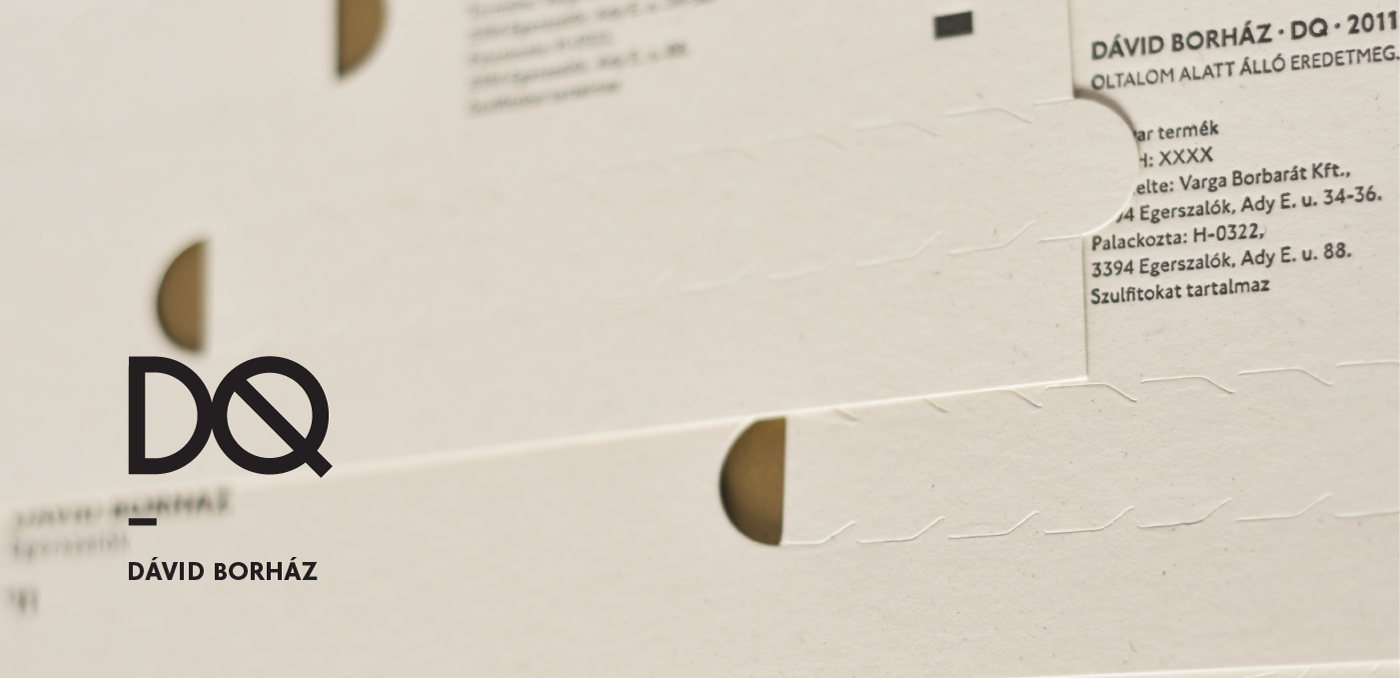
this wine label was designed for Dávid Wine House within the Cégér a jó bornak design competition. the label was selected as the winner of the competition. | ez a boroscímke a Dávid Borház számára készült a Cégér a jó bornak alkotói pályázat keretén belül. a címke győztesként végzett a pályázaton.

RHYOLITE TUFF OF EGERSZALÓK the Old Mountain of Egerszalók is made up of rhyolite tuff. this volcanic rock is easy to scoop and carve. the inhabitants of the region are using this characteristic of the mountain in many ways, even some sights of the town are imposed by it. for example the Kaptárkő, which likely served as a ranger's hut in the old times, and the cave dwellings of the village are both carved into the tuff. similarly, the cellar of the Dávid Wine House: three long corridors go deep inside the Old Mountain, using its natural endowments.
|
AZ EGERSZALÓKI RIOLIT-TUFA Egerszalók Öreg-hegye riolit-tufából épül fel. ez a vulkanikus kőzet könnyedén vájható, jól faragható. a hegy jellegzetességét a környék lakói sokrétűen használják, sőt a település több nevezetességét is meghatározza. a Kaptárkő, mely annak idején vélhetően csőszkunyhóként szolgált, valamint a község határában látogatható barlanglakások is tufába vájt rések. hasonlóképpen a Dávid Borház pincéje is: három hosszú folyosója mélyen az Öreg-hegy belsejébe nyúlik, így használva ki annak természeti adottságait.

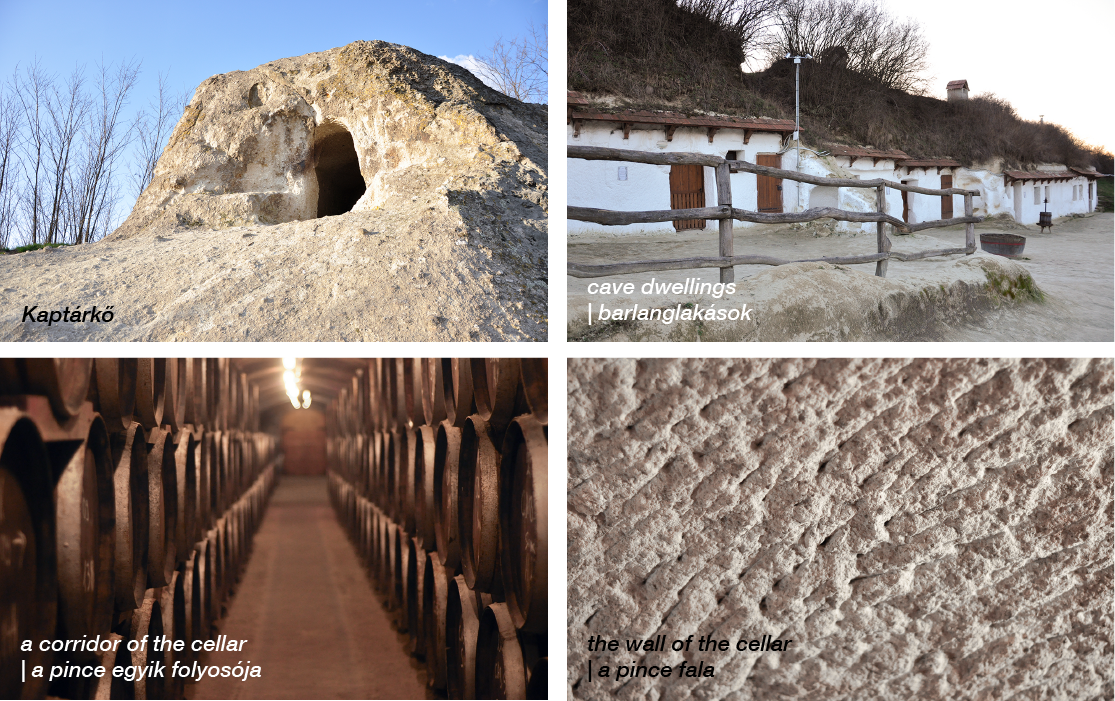

CONCEPT in the label design of DQ I wanted to visualize the phenomenon of carving the Old Mountain, which determines Egerszalók and the David Wine House, too. therefore, I was looking for a solution to remove, to take out a piece of the label, a solution that is interactive and intuitive in the same time. that's how the the idea of perforation came up. the perforated stripes on the label represent the three cellar corridors of the Dávid Wine House which are carved into the vulcanic tuff - the arrangement of the bands refer back to the floor plan of the cellar. tearing the stripes symbolizes carving the corridors. the perforation in the coarse grainy paper creates an organic surface that is very similar to the pick-cut, rugged walls of the tuff cellar walls. after removing the perforated strips - as if the cellar was unfolding before our eyes - , we can learn information that the winemaker could tell us if we were visiting - information about the wine, the cellar and the winemaker himself.
KONCEPCIÓ a DQ címkéjének a tervezésekor szerettem volna az Egerszalókot és a Dávid Borházat egyaránt meghatározó jelenséget, az Öreg-hegy kivájását megjeleníteni. ezért olyan megoldást kerestem, amellyel eltávolítható, kiszedhető egy-egy darab a címke papírjából, amely egyszerre interaktív és szemléletes. így született a perforáció ötlete. a címkén megjelenő három csík a pince három különböző hosszúságú folyosóját jelképezi, a sávok elrendezése pedig visszautal a pince alaprajzára. a csíkok kiszakítása a folyosók kivájását szimbolizálja. a perforáció szakadásai a pince csákánnyal kivájt, barázdált falához hasonló organikus felületet hoznak létre a tufára utaló érdes, szemcsés papírban. a perforált csíkok eltávolítását követően, mintha feltárulna előttünk a pince, olyan információkat tudhatunk meg, melyeket oda látogatva mesélhetne nekünk a borász a borról, a pincéről, illetve saját magáról.

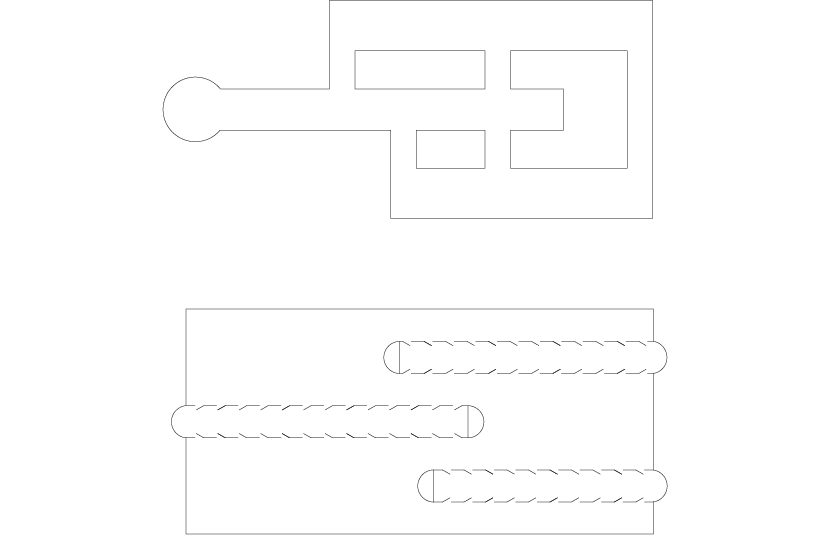
estimated floor plan of the cellar, and the stripes of the label refering to it
| a pince körülbelüli alaprajza, és címke erre utaló sávjai

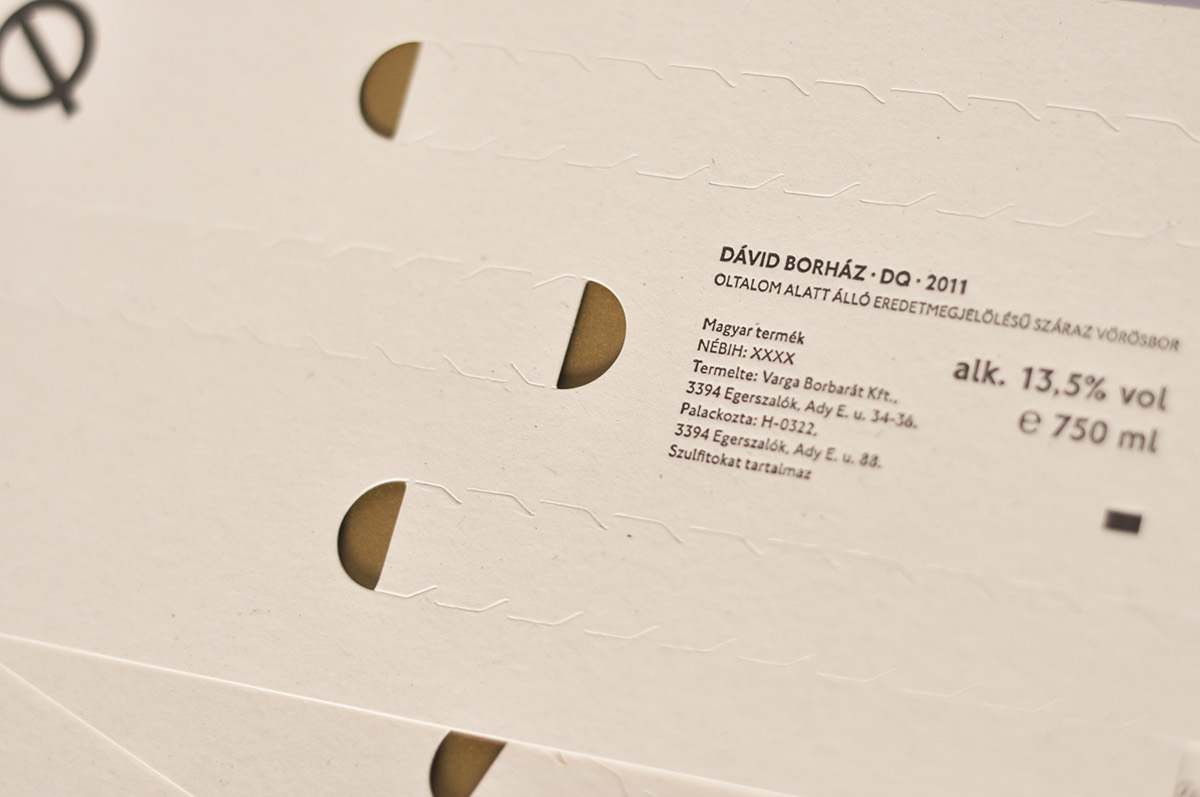
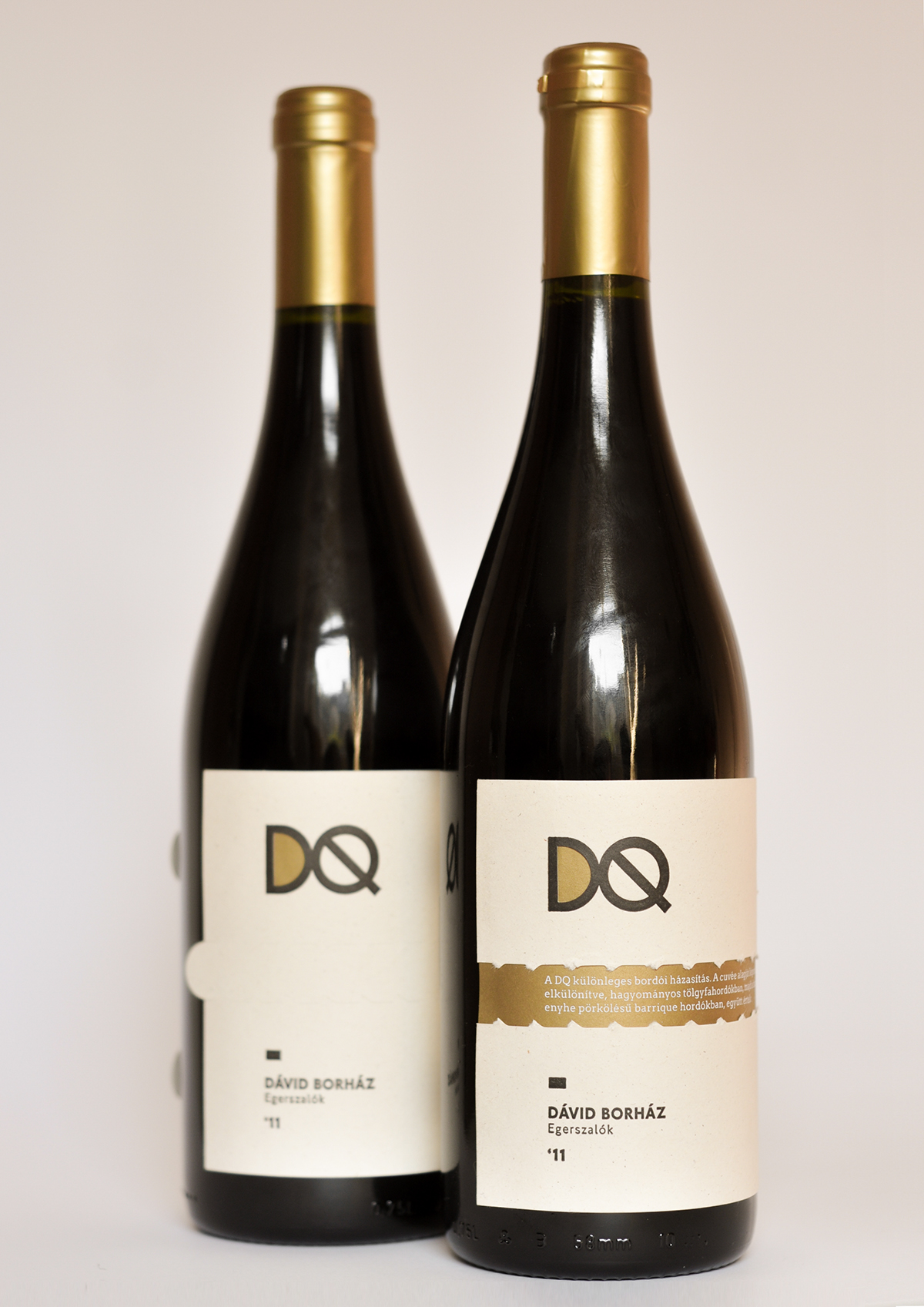
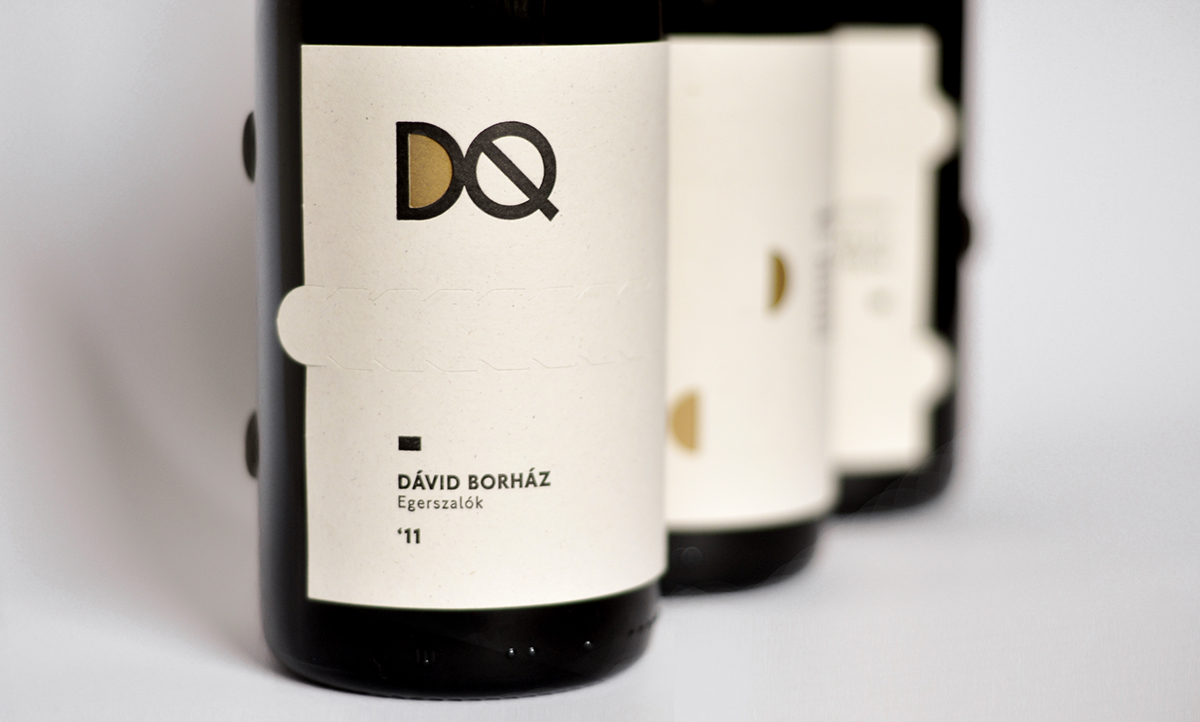
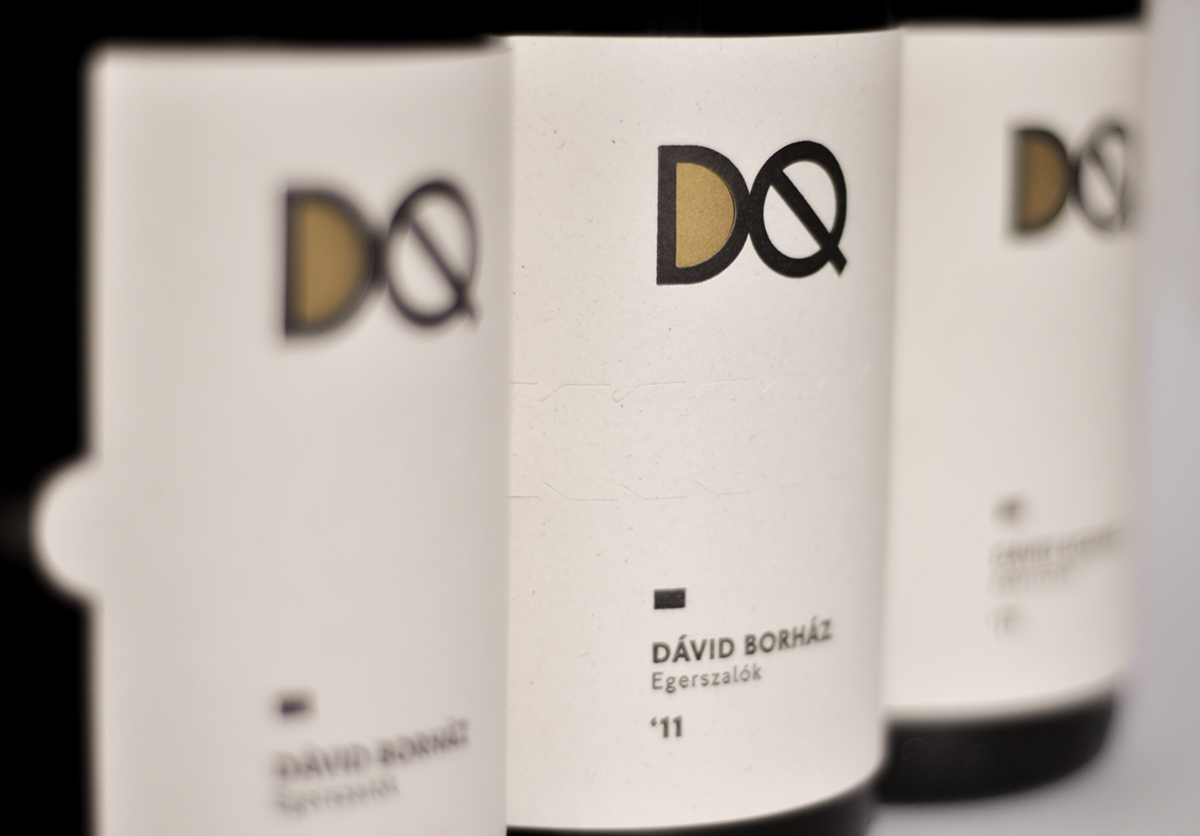
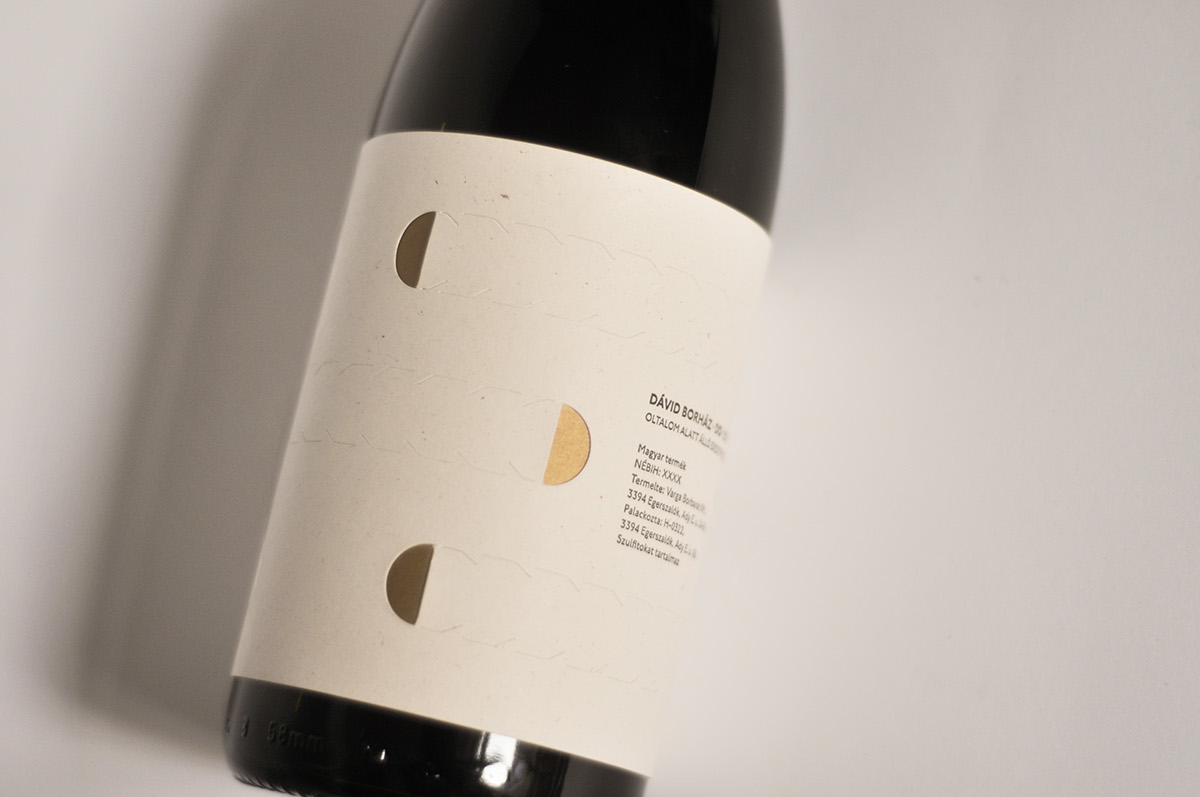
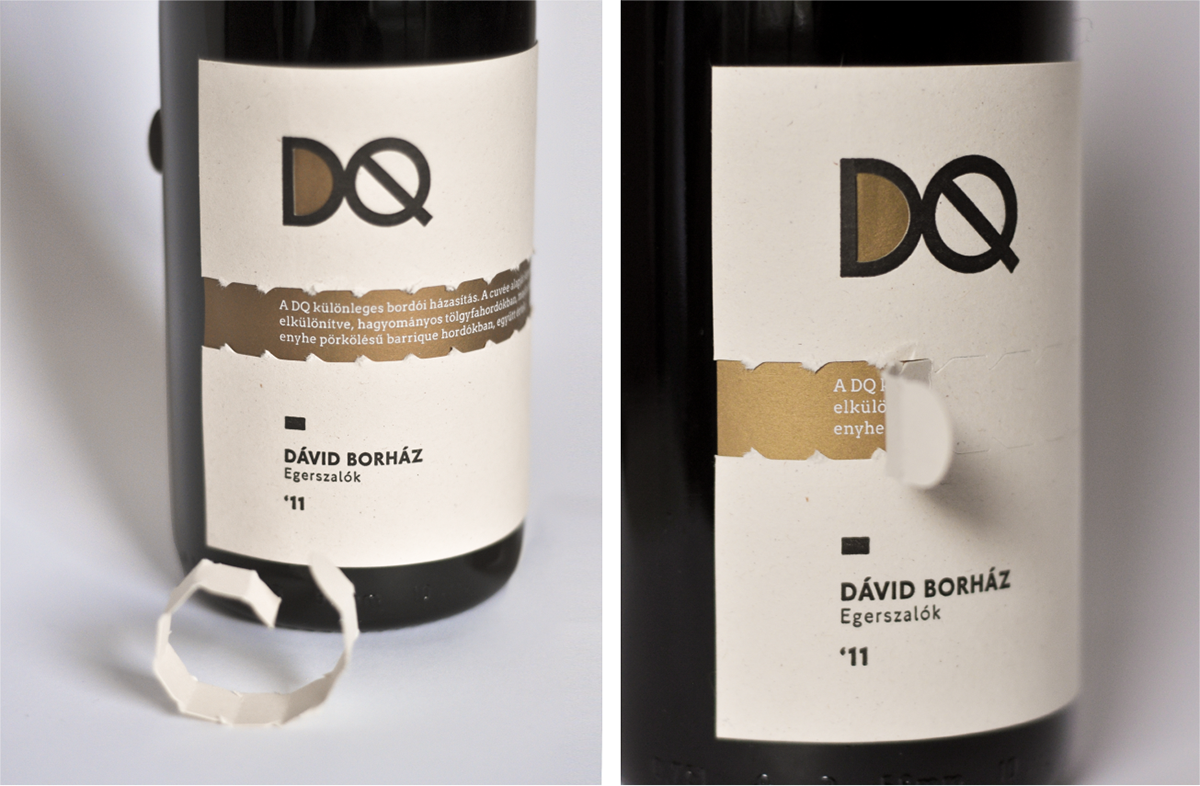
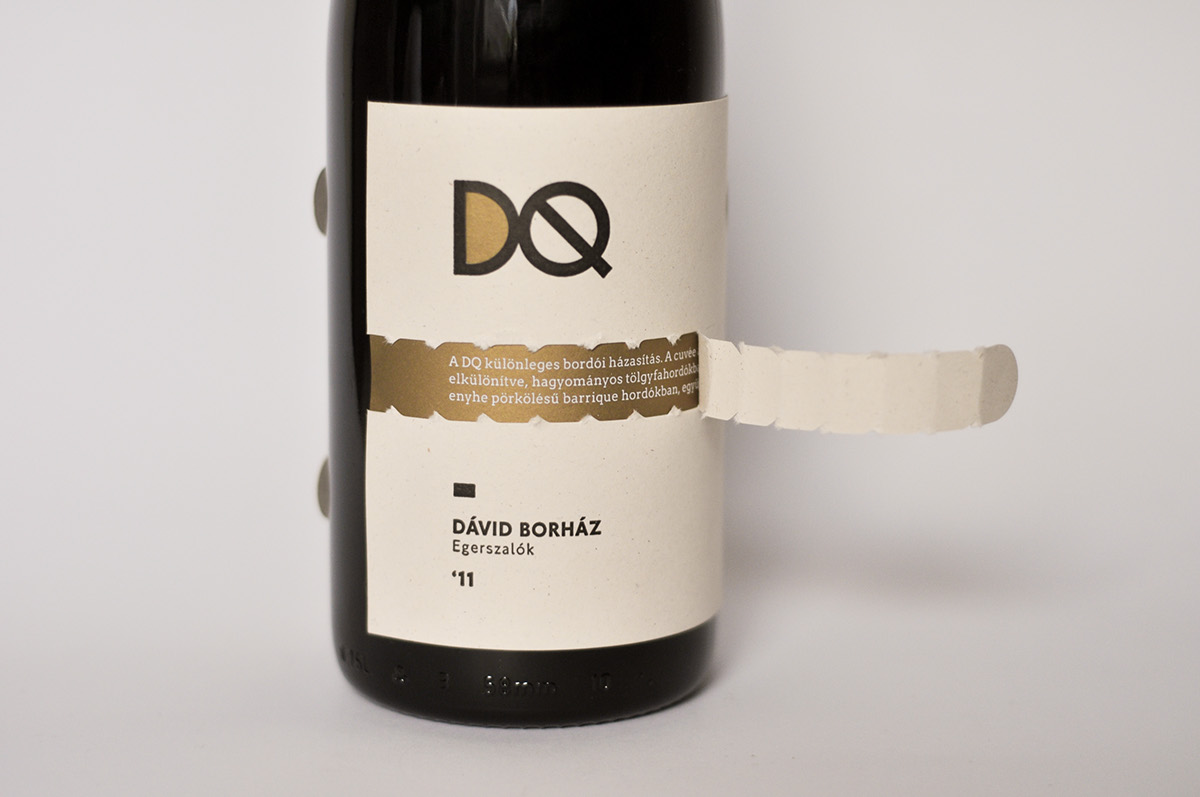
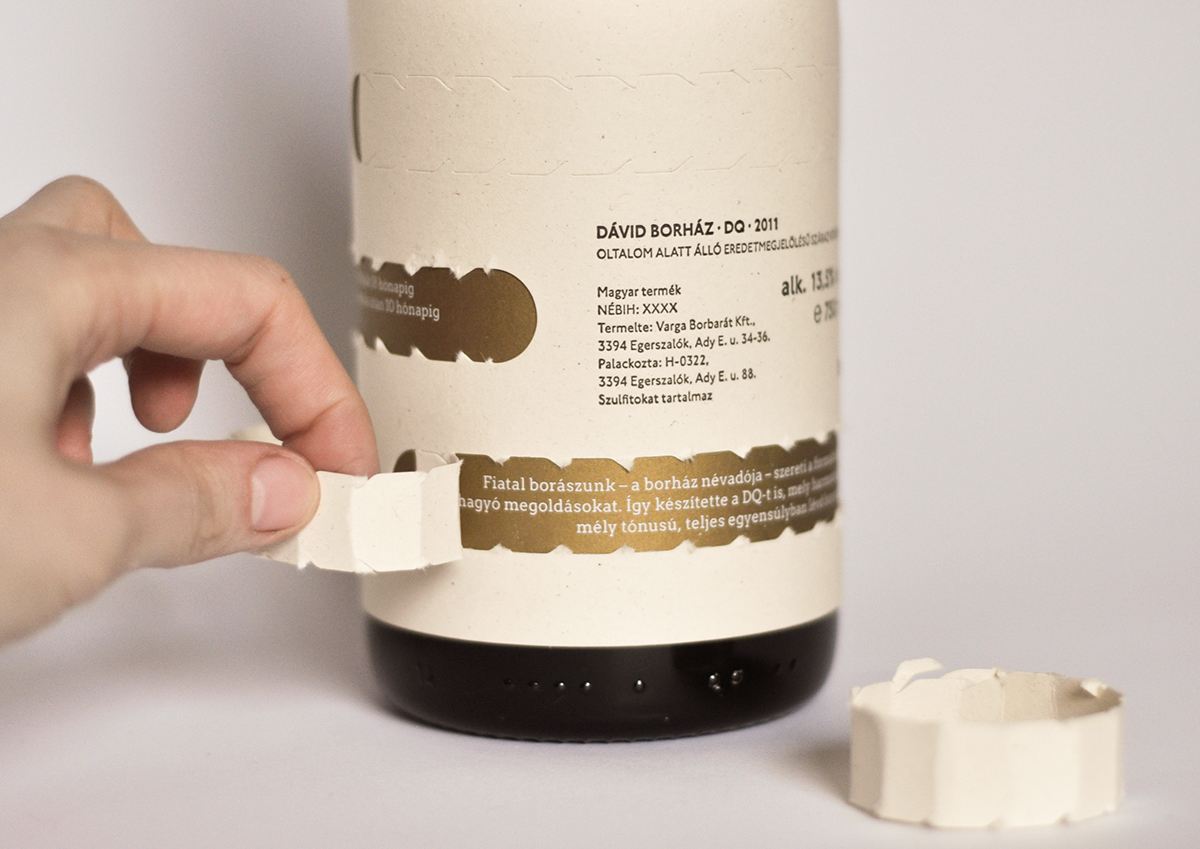
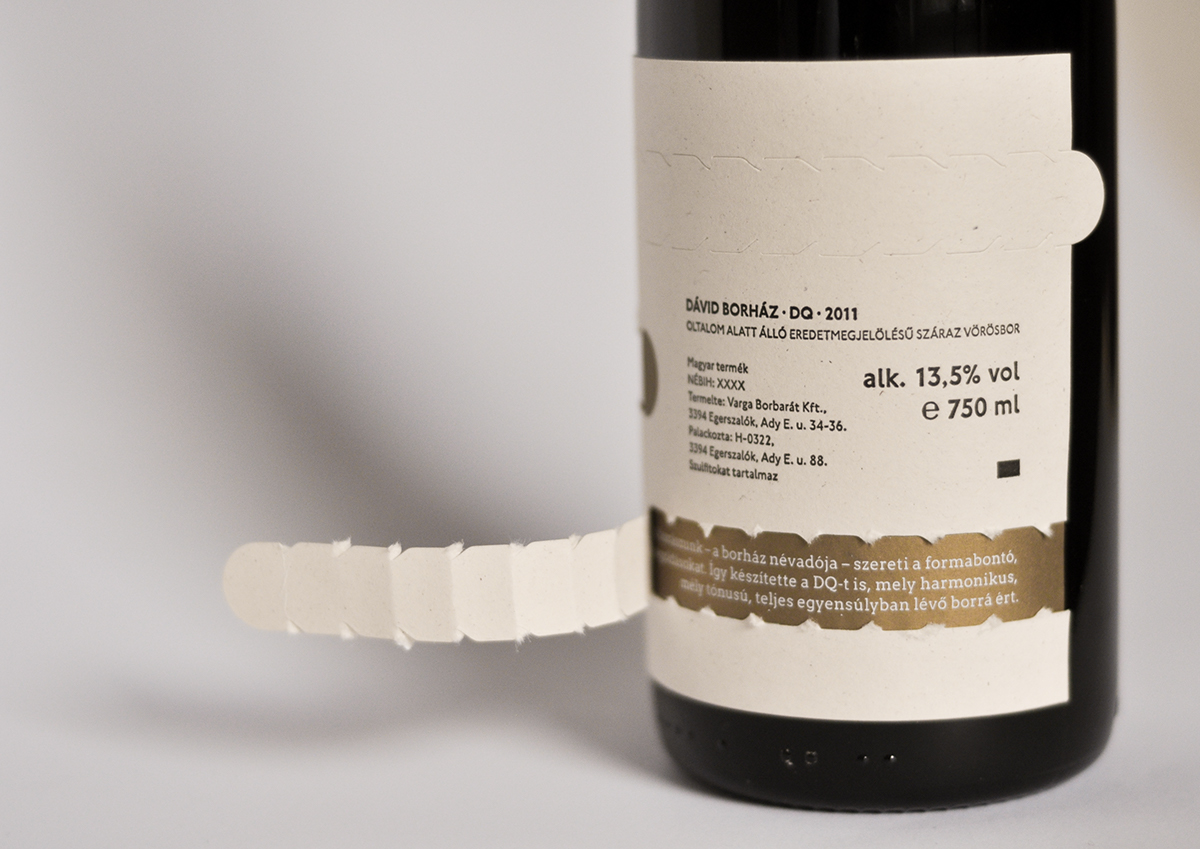


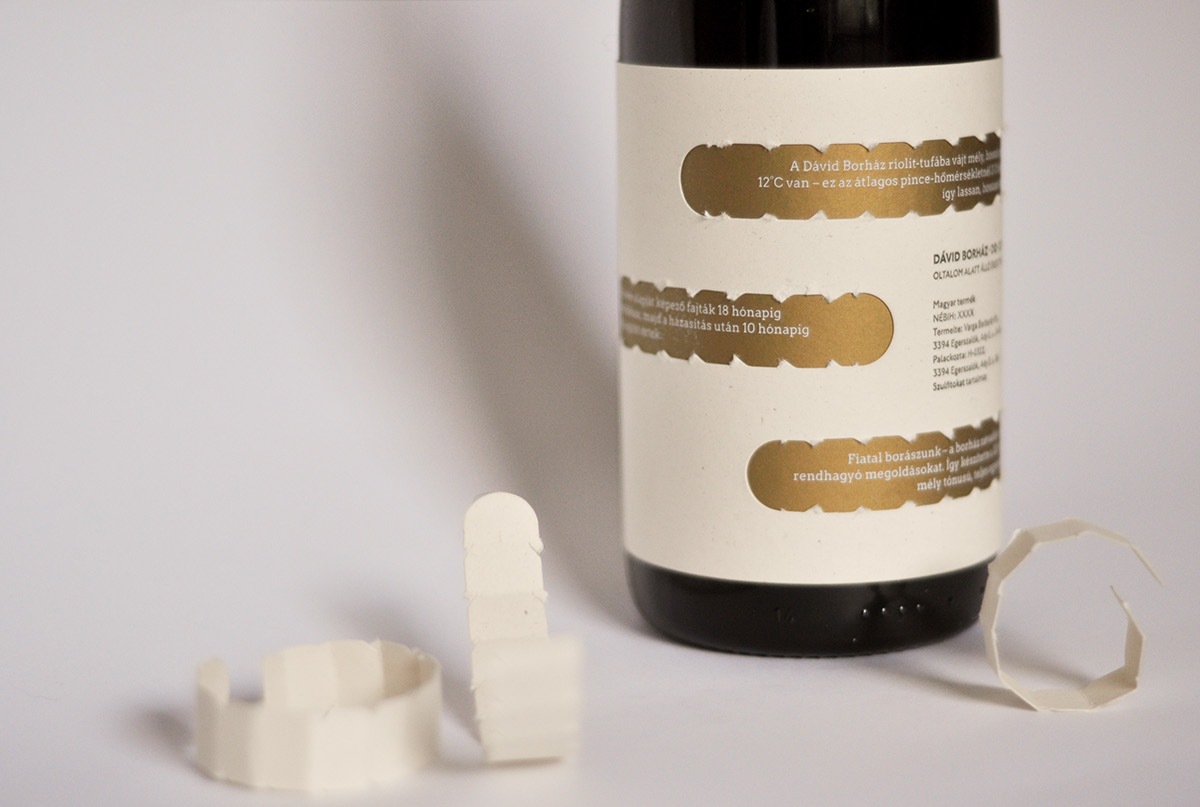


page of the wine in the catalog of Cégér a jó bornak competition, and a photo from the Cégér exhibition in Brussels. (from Cégér a jó bornak Facebook page) | a bor oldala a Cégér a jó bornak pályázat katalógusában, valamint egy fotó a Cégér brüsszeli kiállításáról (a Cégér a jó bornak Facebook oldaláról).


